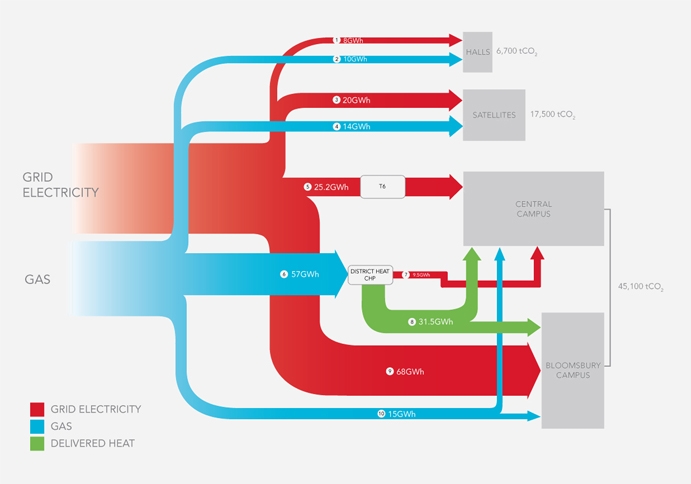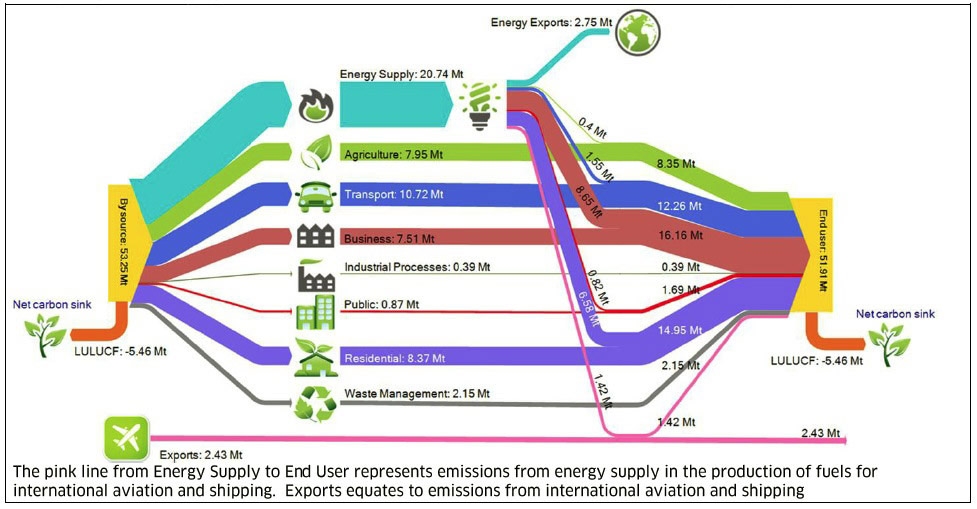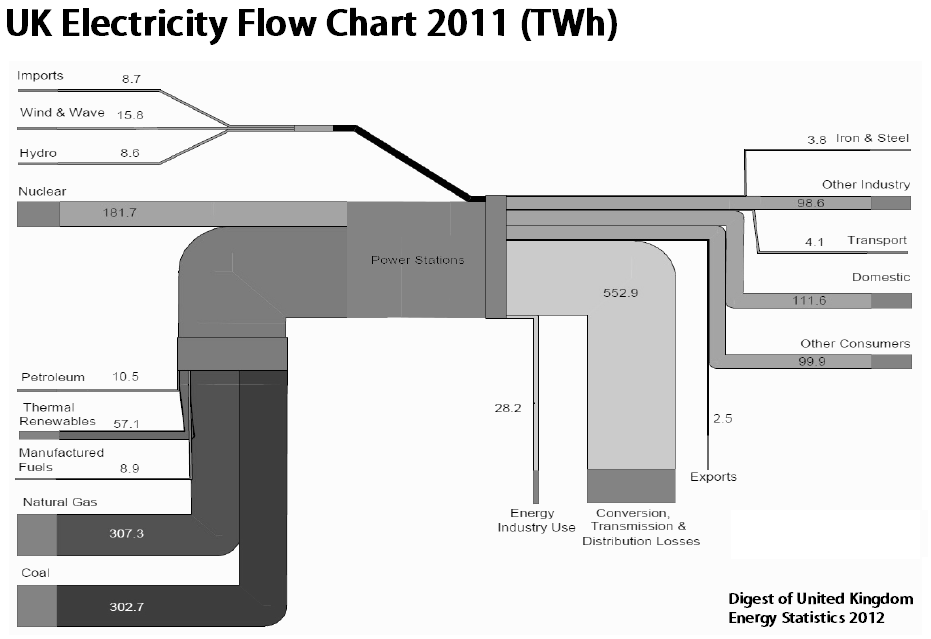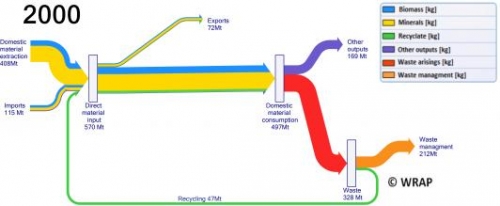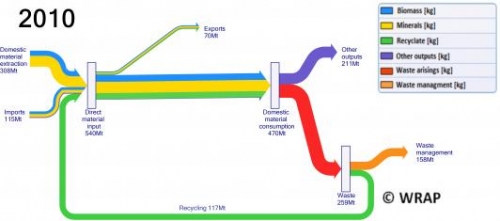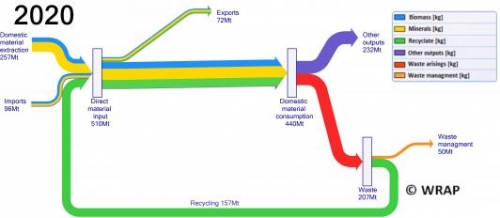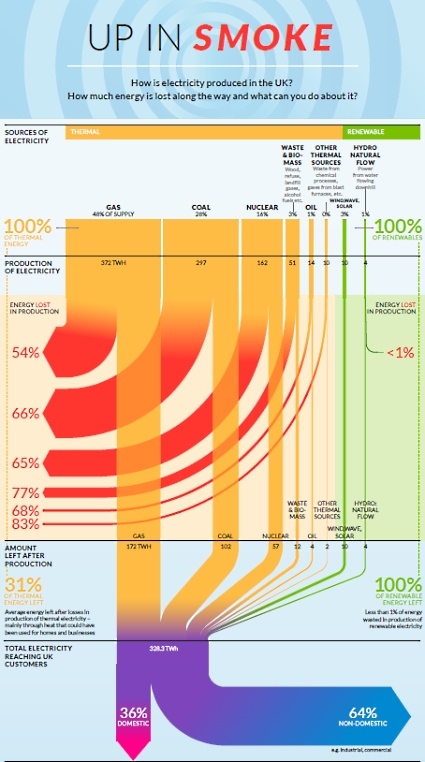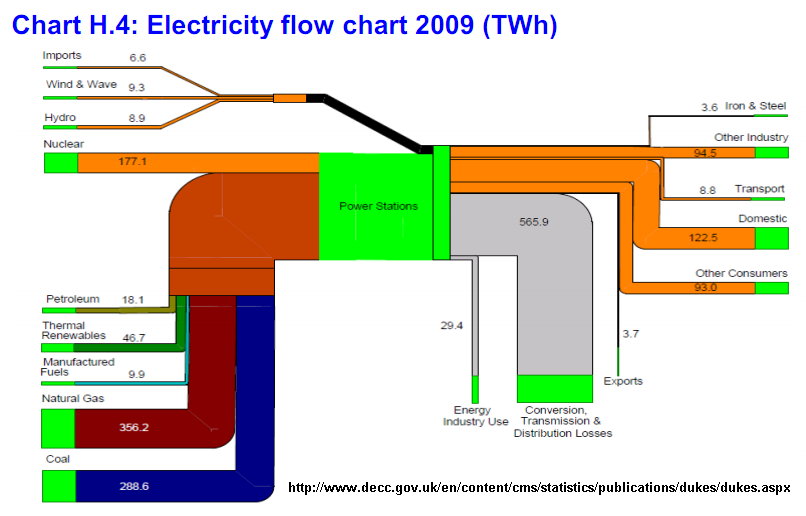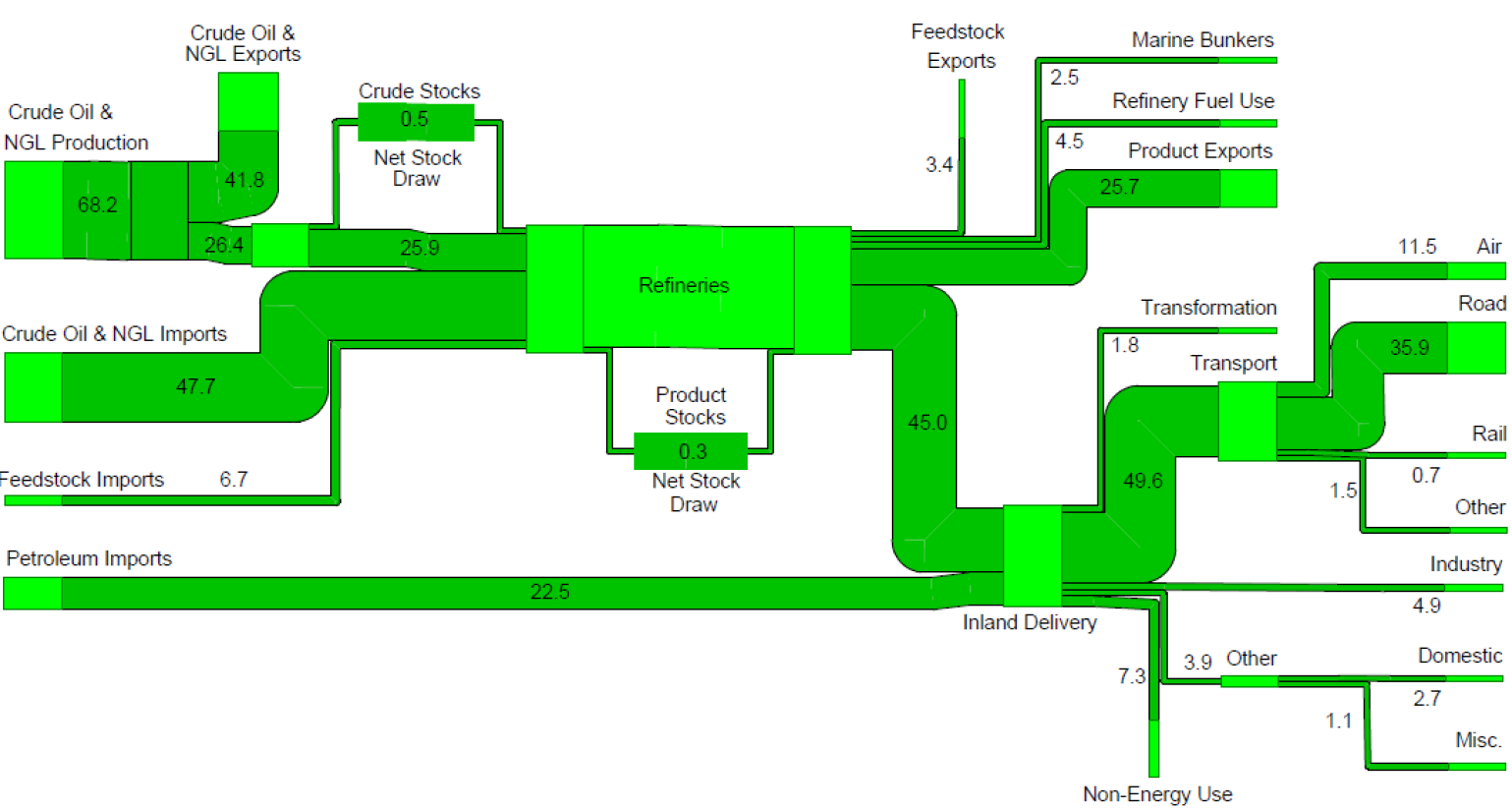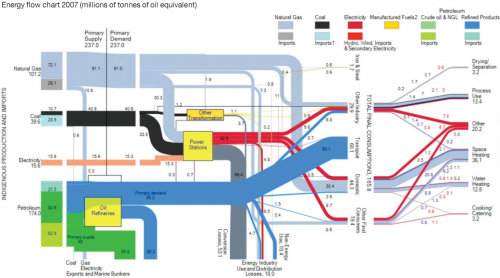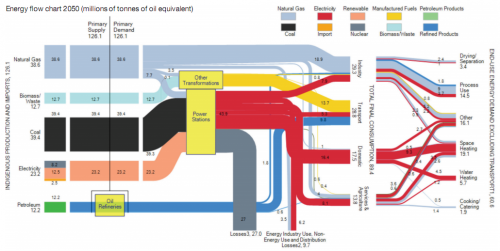Back in May 2013 I had reported about the ‘4see model’ developed by ARUP. The model is used to visualize certain data characterizing an economy, such as value streams, jobs or energy.
Browsing for new Sankey diagrams I came across 4see again, this time in an INSEAD Faculty & Research Working Paper titled ‘The 4see Framework: Characterizing an Economy by its Socio-economic and Energy Activities’ by Roberts et.al. (2013).
The model is explained in detail and the report features a number of beautiful diagrams. Here is one of them:
I chose to present this one on financial flows over the others (on transport, energy, employment), since it has some very distinct features.
In the core of the diagram is the balance of payments. The lower part of the diagram (within the frame) has trade flows (i.e. imports to the UK on the left side, exports from the UK on the right side). Interestingly, since this is meant to depict monetary flows, the direction of the arrows is inverted: goods-receiving countries have liabilities, so the flow is from right to-left (upstream). Same holds true for the UK that has to pay for its imports.
The elements in the dotted line rectangles and the linking flows are non-trade items (i.e. the financial system), some of the within the UK, others foreign. Make sure to read the description below figure 8 on page 16 of the report if you want to learn more.
Data is for the year 2010. The key below the diagram shows the default width of a stream representing ‘£100b[2010]/y’, which I read as ‘100 billion British Pounds normalized to base year 2010 per year’. No actual numbers given for each flow, but the different types of monetary flows in relation to each other and their rough dimensions permit to interpret the diagram.
My favourite Sankey diagram in 2015, so far.
